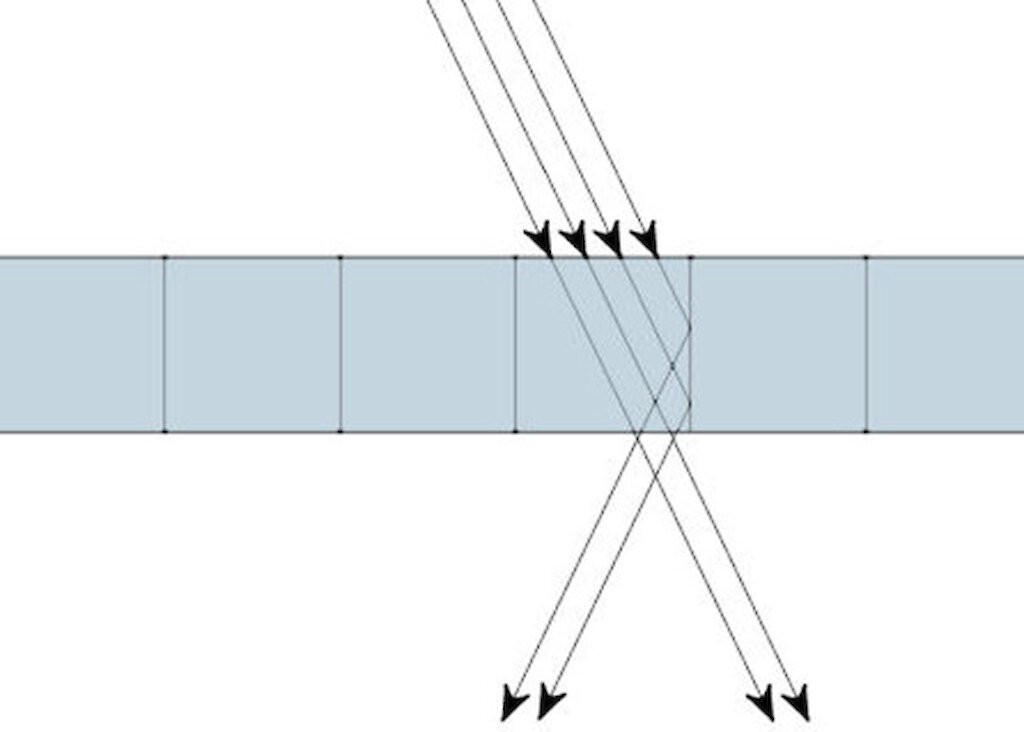Because our Polycrub has been designed and developed to cope with the strong winds of Shetland, Polycrubs are robust and durable in the harshest of climates.
The essence of the unique design of the Polycrub is the incorporation of materials of different properties. This creates a structure where each material complements the others. In a Polycrub a twin-wall polycarbonate sheet is tensioned against a polyethylene hoop which is also under tension.
The gap between these two components requires a series of ‘couples’ to be established whenever a load is applied either from outside the structure or from within. Put simply, the structure acts like a large spring which distributes the forces all along its structure.
Structural accreditation
A comprehensive structural assessment of our latest generation range of Polycrubs has been undertaken by engineering professionals.
The structure is certified to withstand a maximum Effective Wind Speed of 53.71m/s or 120.15mph. This structural accreditation is only valid if the Polycrubs are constructed in strict accordance with the notes and drawings provided with each polycrub materials kit. Further to this, the Polycrub must be constructed by a suitably skilled and experienced builder.
The Polycrub will have a lifespan in excess of 10 years, if maintained in accordance with our recommendations. Anecdotally, the polycarbonate covering has been known to last as much as thirty five years.
Covering Insulation Comparison
| Covering | *R-value | **U-value |
|---|---|---|
| Polycrub polycarbonate | 1.89 | 0.53 |
| Single Pane Glass 3mm | 0.95 | 1.05 |
| Poly film 6mm | 0.83 | 1.20 |
| Air Bubble Cladding | 1.7 | 0.50 |
*R-Value - the measurement of the insulating ability of the material. The higher the R-Value number the greater the insulation value.
**U-Value - the measurement of heat loss or gain, through the material. The lower the U-Value the less heat is escaping.
So what does all this mean for the plants?
For plants to survive in any conditions they require light, heat, ventilation and shelter. Let’s look at each of these in detail:
Light
The Polycrub cover is UV protected meaning that the most harmful of the sun’s light - Ultra-Violet rays - cannot enter the Polycrub. Light distribution is a fantastic 81% and as it passes through the polycarbonate, it becomes more diffuse, meaning it penetrates into areas that light coming through glass does not.
Another factor, which is often over-looked by polytunnel owners is the effect of wind-breaks, bunds and netting; all of which block out the available sunlight. Since Polycrubs are designed to withstand all conditions, wind-breaks are not necessary, and all available sunlight is put to good use.
Heat
Although a Polycrub will heat up in the sunlight, similar to a conventional polytunnel or greenhouse, the air-gap in the outer skin provides an insulating layer which retains this heat.
The black hoops also have a large thermal capacity which store up heat during the day and disperse it at night, acting like a natural storage heater.
Ventilation
Ventilation is important to prevent plants from overheating.
Sufficient air circulation and control of humidity levels also helps to keep down on pests and diseases. Airflow is also crucial for effective photosynthesis and pollination.
Polycrubs need lots of ventilation. Ventilation in the Polycrub is achieved via the combination of doors and/or windows installed. We supply enough polycarbonate, timber and ironmongery to allow customers to build their own doors and windows in the gable ends.
Shelter
Before any polytunnel or greenhouse can hope to offer any protection to plants it has to be able to cope with all circumstances. Polycrubs are designed to withstand strong winds, snow and frost, collisions from air-borne debris and vandalism.

